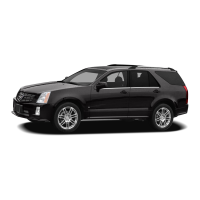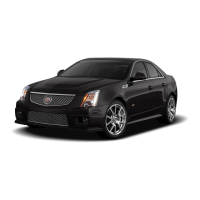When Should an Airbag Inflate?
The driver’s and right front passenger’s frontal
airbags are designed to inflate in moderate to
severe frontal or near-frontal crashes. But they are
designed to inflate only if the impact exceeds a
predetermined deployment threshold. Deployment
thresholds take into account a variety of desired
deployment and non-deployment events and are
used to predict how severe a crash is likely to be in
time for the airbags to inflate and help restrain the
occupants. Whether your frontal airbags will or
should deploy is not based on how fast your vehicle
is traveling. It depends largely on what you hit, the
direction of the impact, and how quickly your
vehicle slows down.
In addition, your vehicle has “dual stage” frontal
airbags, which adjust the restraint according
to crash severity. Your vehicle has an electronic
frontal sensor, which helps the sensing system
distinguish between a moderate frontal impact
and a more severe frontal impact. For moderate
frontal impacts, these airbags inflate at a level
less than full deployment. For more severe
frontal impacts, full deployment occurs.
If the front of your vehicle goes straight into a wall
that does not move or deform, the threshold
level for the reduced deployment is about 12 to
16 mph (19 to 26 km/h), and the threshold level for
a full deployment is about 18 to 24 mph (29 to
38.5 km/h). The threshold level can vary, however,
with specific vehicle design, so that it can be
somewhat above or below this range.
Frontal airbags may inflate at different crash
speeds. For example:
• If the vehicle hits a stationary object, the
airbags could inflate at a different crash speed
than if the vehicle hits a moving object.
• If the vehicle hits an object that deforms, the
airbags could inflate at a different crash
speed than if the vehicle hits an object that
does not deform.
• If the vehicle hits a narrow object (like a pole),
the airbags could inflate at a different crash
speed than if the vehicle hits a wide object
(like a wall).
• If the vehicle goes into an object at an angle,
the airbags could inflate at a different crash
speed than if the vehicle goes straight into
the object.
75

